Spinal diseases are getting younger and younger every year.One of the most common diseases is still osteoarthritis, which has only recently been considered an age-related disease.If the cervical spine is affected, there can be quite severe pain in the neck, arms and head, significantly reducing quality of life.This is often accompanied by a number of other disorders and if left untreated will lead to the formation of a hernia between the vertebrae, with large volumes requiring surgical intervention.Therefore, it is important to diagnose cervical spondylosis as early as possible and begin treatment according to the situation.
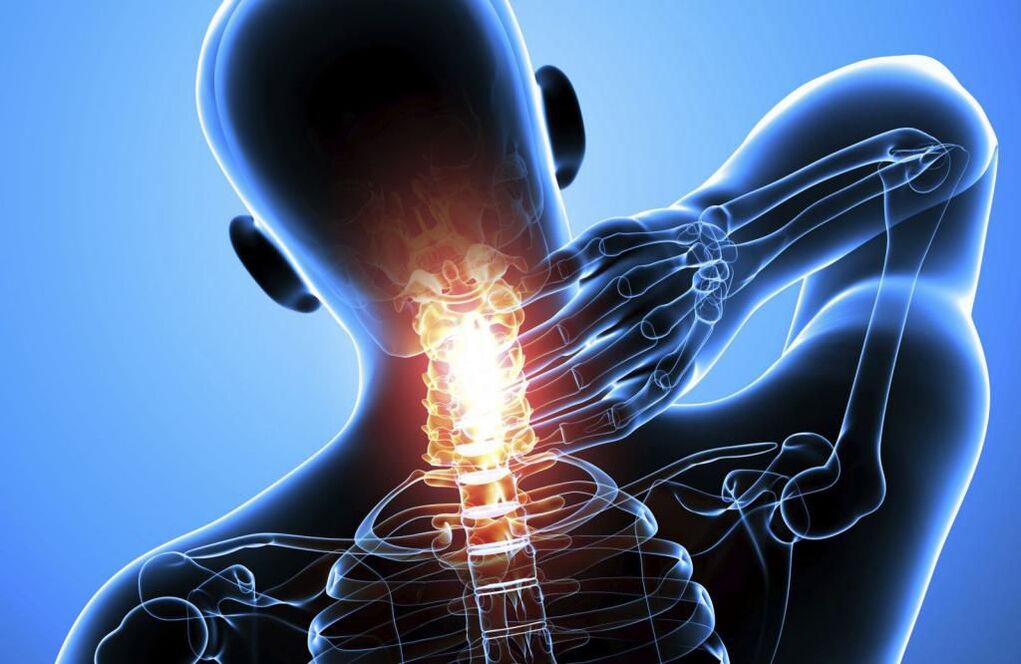
Symptoms of osteoarthritis of the cervical spine
Cervical spondylosis is a disease in which degenerative changes occur in the intervertebral discs.Initially, intervertebral discs are rings of cartilage containing a jelly-like substance that becomes dehydrated.This is often the result of a sedentary lifestyle, long work on the computer, poor posture, neck injuries and a number of other factors.
This leads to a decrease in the strength of the collagen fibers that form the annular fibrous disc.As a result, its thickness gradually decreases, which becomes the main cause of the development of characteristic symptoms of cervical spondylosis:
- neck pain of varying degrees;
- headache, dizziness, loss of consciousness due to violation of the cervical vertebral arteries passing directly through the vertebrae, that is, the development of vertebral artery syndrome;
- fluctuations in blood pressure levels;
- nerve root syndrome due to compression of the spinal roots, accompanied by pain spreading from the neck to the arms, to the hands and fingers, to the head, shoulders, sensory disturbances in these areas, goosebumps, numbness, etc.;
- decreased range of motion of the neck, appearance or intensification of pain when performing certain movements;
- increased fatigue, decreased performance;
- tinnitus, decreased vision, and development of ear, nose, and throat diseases that are difficult to treat.
There are 7 vertebrae in the cervical spine.Typically, cartilage degeneration affects the intervertebral discs located between the 5th and 6th vertebrae, as well as the 6th and 7th vertebrae.
In such situations, you need to contact a neurologist who prescribes an MRI scan.The results of this examination help to accurately identify osteoarthritis at any of the earliest stages of development and choose a treatment method.
Stages of development
In general, there are 4 stages of development of osteoarthritis:
- Grade 1 – pathological changes have just begun to appear in the disc, so symptoms are mild and only occasionally observed.In such situations, treatment will be as effective and simple as possible.
- Level 2 - changes in the intervertebral disc become more pronounced, leading to the appearance of pain in the neck, which occurs and intensifies when making movements of the head.
- Grade 3 – the pain becomes almost constant and can be complicated by the development of vertebral artery syndrome, as well as the formation of intervertebral protrusions and hernias.
- Grade 4 - the disc is destroyed to such an extent that the ability to move in the affected segment of the spine is almost completely eliminated.In this case, severe pain is experienced, radicular syndrome often develops and one or both vertebral arteries are compressed, leading to the appearance of characteristic symptoms.
Treatment of cervical spondylosis
Therefore, the treatment tactics of cervical spondylosis depend on the severity of degenerative changes in the intervertebral disc, the age of the patient and his individual characteristics.Therefore, it is always developed individually for each patient but always aims to solve the following problems:
- eliminate unpleasant symptoms that impair the patient's quality of life;
- improves the quality of blood circulation in the neck;
- improves metabolism in the affected area;
- Eliminate the causes of degeneration and dystrophy of the intervertebral disc;
- reduces the risk of developing complications of osteoarthritis, i.e. protrusion, intervertebral hernia, spondylosis, etc.
In general, at each stage of the development of the disease, the use of different treatment measures is indicated.If in stage 1 it was enough for you to adjust your lifestyle and participate in exercise therapy, then in stage 2 you will need a more extensive impact, including taking certain medications, performing manual therapy sessions, using orthopedic devices, etc.
But the patient must understand that it is impossible to achieve reverse recovery of the degenerative-dystrophic changes that have occurred, especially if stage 2 or higher osteoarthritis is diagnosed.In such situations, treatment will be aimed at improving the patient's health and preventing further progression of the disease.Sometimes it is possible to completely overcome this condition only in the early stages of osteonecrosis, but at this stage of development, the pathology is diagnosed extremely rarely, because the patient only feels slight discomfort in the neck as a sign of fatigue and does not consult a doctor.
In more severe cases, the treatment of cervical spondylosis will be even more complicated and lengthy.In all cases, it is performed under the supervision of a neurologist with periodic follow-up examinations and therapy adjustments depending on changes in the patient's health.
Adjust your lifestyle
All patients diagnosed with cervical spondylosis are advised to make certain changes in their lifestyle.In each case, these recommendations vary depending on the characteristics of the person's professional activities and a number of other activities.
The vast majority are advised to increase their physical activity levels and take breaks from work at least every hour to warm up if they have to sit.In case the patient is actively involved in sports, it is recommended to reduce the load on the cervical spine.So it will be justified to give up the sports of running, jumping, weightlifting and wrestling.
Overweight people are also encouraged to take measures to lose weight, as well as adjust their diet.When osteonecrosis has occurred, it is important that the diet meets the body's daily needs as fully as possible.Therefore, you should abandon fast food and semi-finished products and bring your diet closer to a rational diet.This means creating a menu so that half of the diet consists of vegetables and fruits, while also containing enough protein.
Treatment of cervical spondylosis with medication
Drug treatment is mainly aimed at eliminating unpleasant symptoms of cervical spondylosis.As a rule, it is very complex and includes the use of drugs from different groups, each of which solves specific problems.Therefore, it is also developed individually for each patient.
NSAIDs
Nonsteroidal anti-inflammatory drugs or NSAIDs are a broad group of drugs that not only have anti-inflammatory properties but also analgesic properties.They are available in a variety of dosage forms, including tablets, capsules, ointments, gels and creams, as well as intramuscular solutions.NSAIDs should only be used when needed, that is, when severe neck pain occurs.
For severe pain, NSAIDs can be injected intramuscularly.
The disadvantage of oral drugs of the NSAID group is their irritating effect on the mucous membranes of the stomach and duodenum.This can cause the pathological condition of these organs to worsen, especially gastritis and stomach ulcers.To minimize such risks, proton pump inhibitors are prescribed in combination with them.
There are drugs that have a more gentle effect on the digestive tract, therefore they are widely prescribed to relieve pain and inflammation in osteoarthritis.In addition, more advanced drugs have been developed, characterized by selective effect, which are often prescribed for osteoarthritis, but they are more expensive and are not available to all patients.
Corticosteroids and injections (blockade)
Corticosteroids are hormonal drugs prescribed to patients with severe inflammatory processes.They can cause some undesirable consequences with long-term use, therefore they are prescribed in short courses in the most difficult cases.As a rule, the use of injectable solutions is indicated, since with this method of use these drugs are much easier to tolerate by the body and cause side effects less.
Corticosteroids are often used in combination with local anesthetics when performing blocks, that is, to quickly relieve very severe pain by introducing the prepared mixture to special points near the path of the spinal nerves.This procedure requires certain skills and dexterity and can therefore only be performed in medical facilities by specially trained medical personnel.Otherwise, the likelihood of developing unwanted consequences and complications is very high.
It is recommended to blockade no more than 4 times a year.
Muscle relaxants
Muscle relaxants are a group of drugs used to eliminate reflex muscle spasms caused by acute inflammatory processes.This often happens with cervical spondylosis and causes severe pain in the neck, making the situation even worse.
Vitamin
Since osteochondrosis creates significant prerequisites for compression of the spinal roots, vitamin complexes containing mainly B vitamins are often prescribed. They are directly involved in the transmission of nerve impulses, which is especially important in the development of nerve root syndrome.
Chondroprotectors
Chondroprotectors are a controversial drug.They are based on substances used by the body to restore damaged cartilage tissue, which determines the indications for their use in cervical spondylosis.But at the same time, there is no convincing evidence of their effectiveness against advanced forms of the disease.In the early stages of osteonecrosis, they really have a positive effect on the condition of the intervertebral discs, helping to improve the patient's health.And at later stages, they can only help inhibit the further progression of degenerative changes in the intervertebral disc.
Chondroprotector is produced in powder form for the preparation of solutions, capsules, products for topical use, as well as solutions for intramuscular injection.The largest positive effect is seen from the latter.
Topical products
These are exactly the drugs available in the form of gels, creams or ointments that patients often start using when signs of cervical spondylosis appear.They have different effects, including anti-inflammatory, analgesic, warming or, on the contrary, cooling and local irritation.
Usually these products contain NSAIDs so they help relieve pain but are mainly effective in the early stages of osteoarthritis.In addition, the ingredients of these drugs can be menthol, hot pepper extract, snake or bee venom.
Local irritants act on the principle of stimulating the nerve endings of the skin, thereby reducing the severity of pain and increasing blood flow in the area of application.But such remedies are effective only in the early stages of the development of cervical spondylosis.
Preparations to improve microcirculation
Drugs in this group are used to improve the quality of blood circulation, which is especially necessary for vertebral artery syndrome.Some drugs have a vasodilating effect, help improve brain nutrition and help eliminate tinnitus, headaches, and dizziness.But if the factor causing pressure on the vertebral artery is not effectively eliminated, such treatment will only bring temporary results.
Exercise therapy
Physical therapy is the basis for treating cervical spondylosis.Today, there are many proprietary and generally accepted therapeutic exercise methods for cervical spondylosis, but patients should understand that there are no universal exercises.A set of exercises must be selected by a specialist on an individual basis, taking into account not only the stage of development of degenerative-dystrophic changes, but also the patient's age, the nature of existing concomitant diseases, the presence of radicular syndrome or compression of the vertebral artery.Therefore, different exercises may be prescribed for the same patient with nearly identical changes in the intervertebral disc.
In general, physical therapy has the following goals:
- strengthens the muscles in the neck and upper shoulders;
- activates blood circulation in the affected area, which will contribute to the recovery of the fibrous rings of the intervertebral disc;
- normalizes muscle tone.
It is necessary to perform exercise therapy every day.At first, it's best to join special groups or work one-on-one with an exercise therapy instructor.This will allow you to 100% master the technique of performing each proposed exercise so that its implementation brings maximum benefit.The specialist will help you choose the optimal load and develop a program to increase it, taking into account the patient's level of physical development.
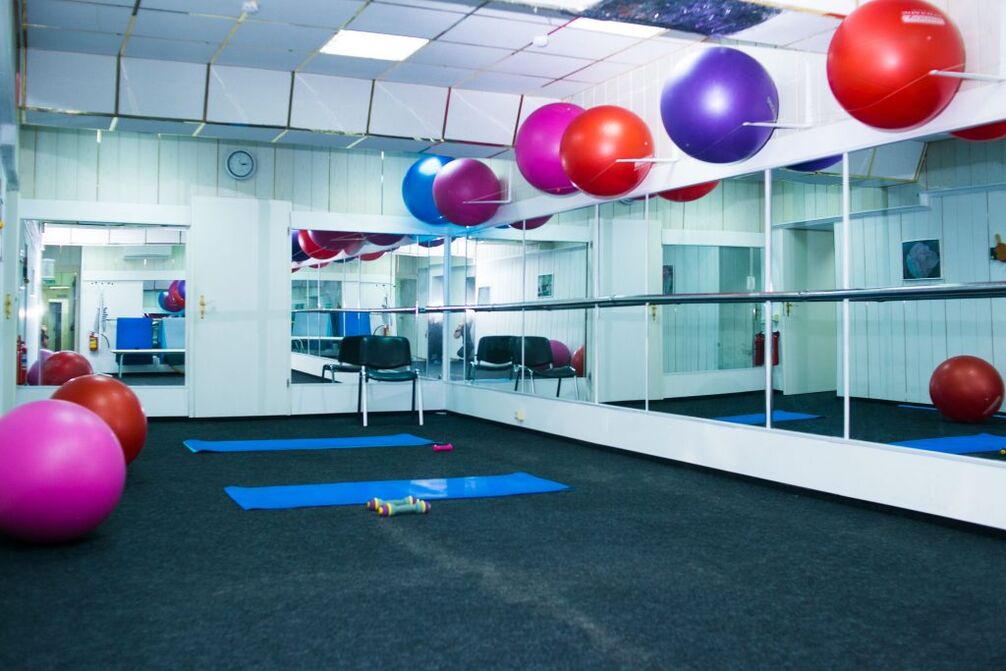
In the future, patients can practice exercise therapy independently at home.At the same time, it is important to approach this issue with full responsibility, performing the exercises slowly, without haste and in comfortable conditions.But if pain appears at any time during exercise, you should immediately stop performing the exercise that caused its appearance and consult a doctor to determine the cause and adjust an exercise therapy program for cervical spondylosis.
When performing exercise therapy, do not make sudden, forceful movements, turn your head, or perform exercises when in pain.In such situations, there is a high risk of exacerbating existing changes in the disc instead of obtaining the expected benefits.
Swimming has a very positive effect on the condition of the spine.This is exactly the type of sport that does not put stress on the discs, but actively involves the muscles of the back and neck.Thanks to that, the muscle corset is effectively strengthened, acting as a natural support for the spine.Therefore, if possible, patients should go to the swimming pool 2-3 times a week.
Guidelines for the treatment of cervical spondylosis
Manual therapy is one of the most effective methods of treating cervical spondylosis, as it allows you to influence not only the muscles and soft tissues, but also the spine.But it is very important to take a responsible approach in choosing a chiropractor, since incorrect or too strong influence can lead to deterioration of the patient's condition and even the development of complications.Such a specialist must not only have higher medical education and a license to practice manual therapy, but must also have a thorough understanding of the anatomical and osteoarthritis features and have sufficient experience.
Don't confuse manual therapy and massage therapy.The difference between these types of manual therapy is very significant, since therapeutic massage involves only soft tissues, while during manual therapy, the doctor also acts on the spine.
Therefore, each manual therapy session begins with stroking, which allows you to prepare the skin for the more positive effects that follow.In the future, rubbing, kneading and pressing techniques will be used, allowing you to activate blood flow in the neck, neck and upper back area.As soon as the skin and muscles are sufficiently warmed and the patient is relaxed, the doctor begins to perform mobilization and manipulation techniques.They imply the performance of rotations with oscillatory movements, pushing in the direction of the most pronounced limitation of movement, leading to increased mobility of the spine and elimination of functional blocks.
So, thanks to qualified manual therapy, it is possible to:
- normalizes the position of the vertebrae, thereby eliminating increased pressure on the intervertebral discs and creating favorable conditions for their recovery;
- eliminate pain caused by cervical spondylosis and its complications;
- Returns over-relaxed muscles to their normal state and relaxes contracted muscles;
- increased neck mobility;
- removes pressure on the vertebral artery and thereby normalizes blood flow to the brain;
- eliminates compression of the spinal roots and thereby normalizes the transmission of bioelectric impulses to those organs for the conservation they are responsible for, as well as pain relief.
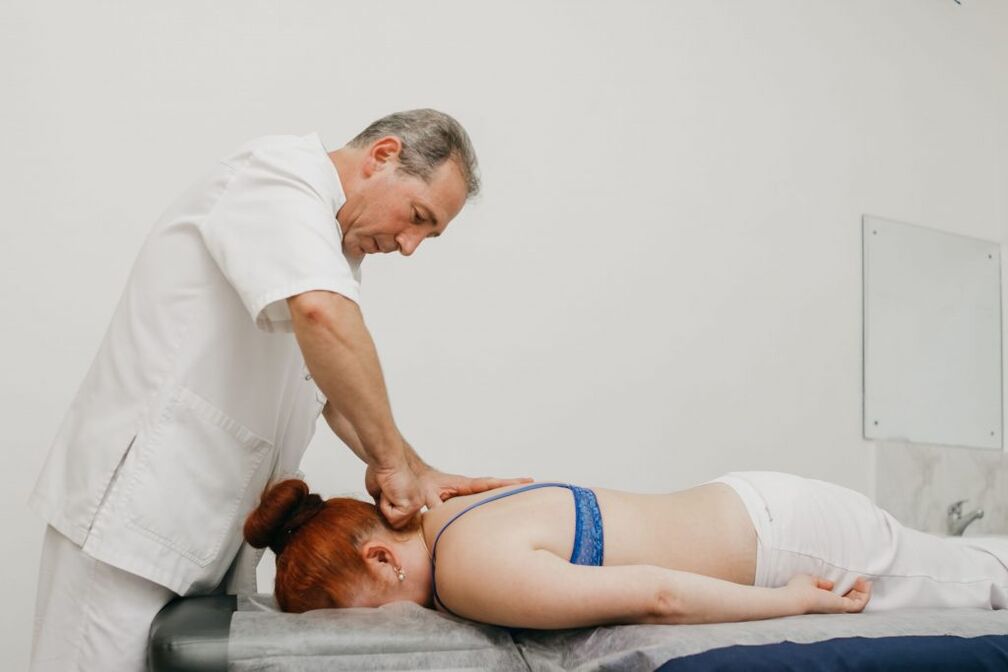
What is especially noteworthy is the author's manual therapy method.It involves the use of special, patented impact techniques, which make it possible to achieve visible results after the first session, not only on the part of the neck affected by osteoarthritis, but also on the entire body.As a result, not only pain and other symptoms of the disease disappear, but the function of all organs improves and the immune system is strengthened.The second and subsequent sessions enhance the positive effect and consolidate it, which ensures that if other medical recommendations are followed, the period of remission will last as long as possible.
Self-massage
To improve health, patients can periodically massage their neck to reduce fatigue and pain.To do this, sit in a comfortable position and try to relax your neck muscles.Then perform stroking movements with the palm of your hand, gradually switching to circular rubbing, grasping the shoulder area.All movements are performed from the spine without sudden and strong pressure.In this case, you can use topical anti-inflammatory medications recommended by your doctor.
Physical therapy treatment
Physical therapy is indicated outside of acute inflammatory processes.It allows you to consolidate the achieved treatment results and further improve the patient's condition.As a rule, a course of 10-15 procedures is prescribed, selected individually for each patient.It could be:
- Electrophoresis - involves the use of electric current to ensure deeper penetration of the prescribed drug.
- Magnetic therapy – helps activate blood circulation in the affected area and stimulates metabolism.In addition, magnetic therapy sessions also relieve pain and help eliminate swelling.
- Laser therapy has an anti-inflammatory and vasodilating effect, leading to a reduction in the severity of pain.
- Ultrasound therapy is a physical therapy method based on the positive effects of ultrasound waves on the body.They help reduce the sensitivity of nerve endings and also have anti-inflammatory and pain-relieving effects.
- Electrodynamic current – procedures lead to pain relief, improve tissue nutrition, have a positive effect on muscles and help eliminate inflammation.
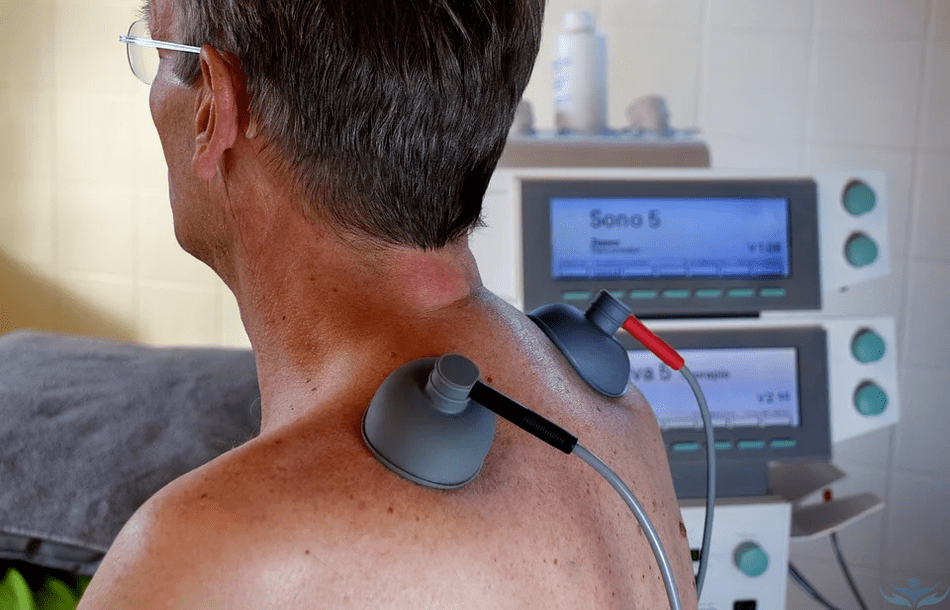
Traction therapy
When the vertebrae fuse together due to flattening of the disc, Glisson ring traction therapy is indicated.The essence of the method is to apply a precisely adjusted tensile load to the cervical spine using a special device to fix the head and with a load on the opposite side.Such procedures help increase the distance between the vertebrae, which leads to a decrease in pressure on the intervertebral discs and facilitates their recovery.But such therapy can only be prescribed by a doctor.
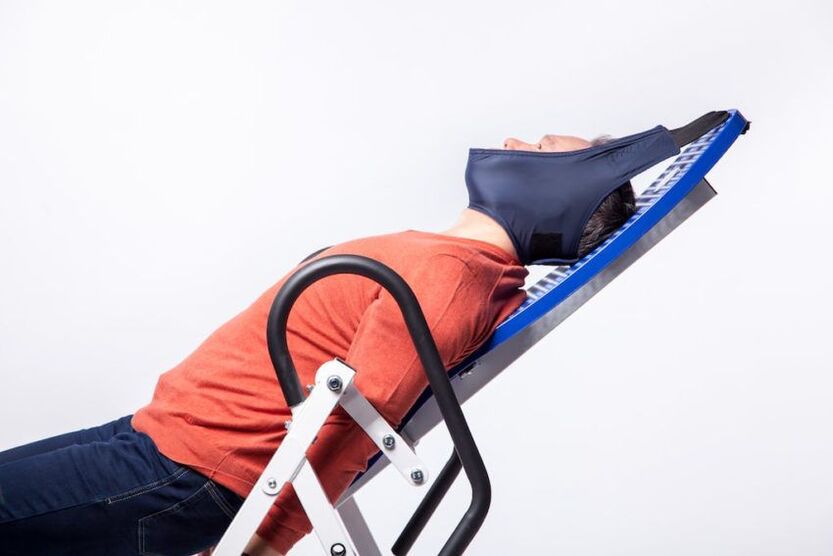
needle tools
The Iplicator is a simple, affordable means of acupressure on the neck area.This can be a plate with spikes that should be placed under the neck or a similar device but in the form of a roller.Due to the tingling sensation of the spines, receptors in the skin are stimulated, leading to more active blood flow to the affected area.
Some patients have noted reduced neck pain after using the applicator as well as increased performance, improved sleep quality, and restored neck mobility.But if you have skin damage in the affected area or vascular diseases, you should not use a needle applicator.
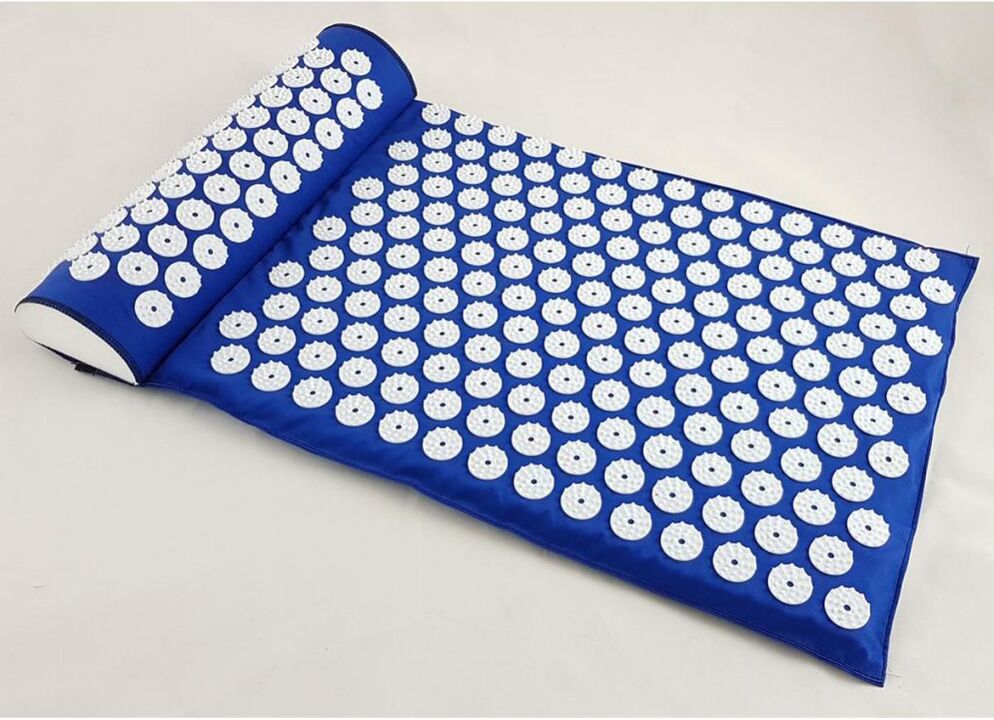
Orthopedic equipment
To reduce the load on the cervical spine, it is recommended to change orthopedic mattresses and pillows, because sleeping on an uncomfortable pillow will put additional pressure on the vertebral arteries and nerves during sleep.Orthopedic products do not have this drawback and ensure the maintenance of the correct physiological position of the spine along the entire length and thereby reduce the rate of progression of existing osteoarthritis.
But it is important to choose the right pillow and mattress to suit the patient's personal characteristics and have the right filler.Thanks to them, the quality of sleep can also be improved and wake up in the morning cheerful and relaxed.
Additionally, some patients are advised to wear a Shants necklace.It is a removable orthopedic device that allows you to immobilize the neck and significantly reduce the load on the cervical spine, for example, when working at a computer or after an injury.The collar is worn against the expected load placed on the neck, but must be removed during sleep and rest.They differ in design, height, degree of fixation, so only the treating doctor can choose the optimal one.
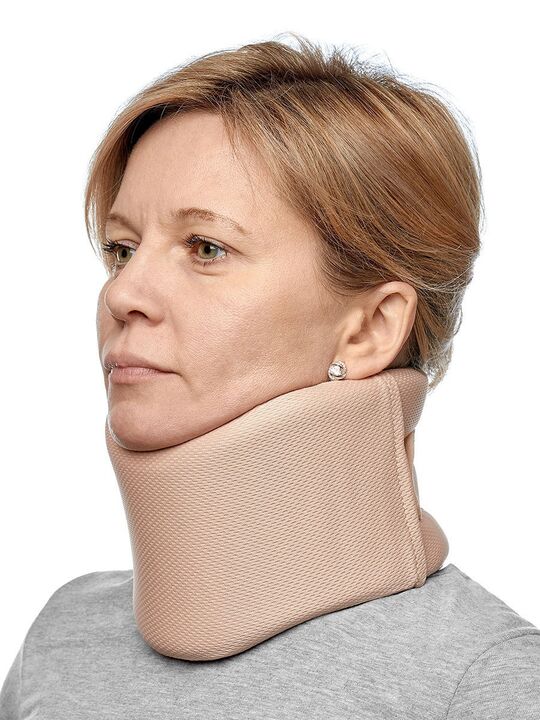
Therefore, the treatment of cervical spondylosis can be quite long and complicated.You should be prepared for this, because there is no other way to prevent the development of changes in the intervertebral disc, avoid the development of complications and the need for surgery.But in most cases, the patient's condition improves during the first weeks of treatment.At the same time, it is important not to self-medicate, but to contact a neurologist, because only a qualified specialist can determine the degree of osteoarthritis and choose the most suitable method of treating the disease for a particular patient.

















































